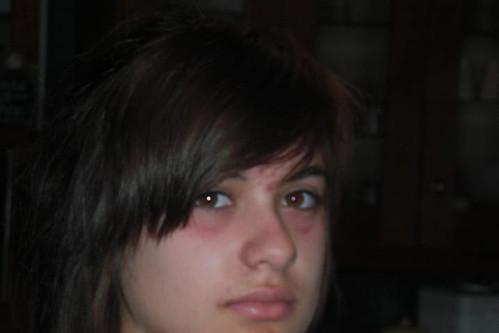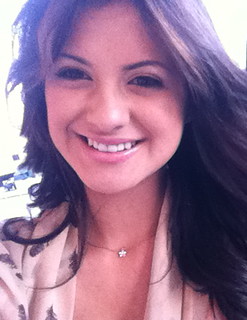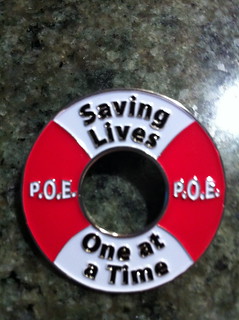After dealing with chronic insomnia for nearly 5 years, I can honestly say for the first time in a very long time, I have "no more sleepless nights." Many of my co-workers suffer from the same insomniac issues I did, so when I mention that I am sleeping now, they tend to lean in close, eyes glistening with hope, and ask me "HOW???" They want to know the magic cure. Is it a pill? Is it a tea? Is it meditation? That's when I laugh and tell them to be patient and I'll share everything. Truth is, I can give them all the answers and remedies, but if they aren't ready to take a inventory of where they are and assess whether they are ready to make a change, it won't work.
"You can't push anyone up the ladder
unless he is ready to climb himself" - Andrew Carnegie
The Five Year Fog
Insomnia means different things to different people depending on what type of sleeper they are and what type of insomnia they experience. For me, insomnia was triggered by medical & medication issues, physical surrounding, racing thoughts, and really poor sleep hygiene. Every night was like ground hog day happening over and over again. I had no problem falling asleep around 10:30 or so, but I couldn't stay asleep. By 11:30 I was wide awake again and I would stay awake until just about the time I needed to get up for work. Four to five nights out of the week, I would sit up surfing the internet or answering work emails - awake - while everyone else in my house slept. Unfortunately, the lack of sleep sent my other medical conditions like fibromyalgia and migraines in to full gear. Eventually, I had to increase the dose of those medications because relief could not be found on previous doses. Working the day after a night without sleep was like dragging myself through quicksand. I just felt myself weighed down in a fog, my body moving slowly through the day to day movements.
After having two near accidents falling asleep at the wheel while driving, I finally went to my doctor for help. After a long discussion about the pros and cons, she prescribed me Ambien. We started with a prescription for 10 tablets to see if it would help. I was very selective about taking the Ambien. I would look at my calendar and think, "what meetings do I need to function really well", and then I would take the Ambien the night before those meetings. Fridays and Saturdays were nights were my "awake" nights because my precious Ambien could not be sacrificed for personal sleep. All I knew is this stuff really worked. I was sleeping! I still felt tired during the day, but I didn't remember being awake at night, so that must have meant I was sleeping. Right? Not necessarily. Studies have found that patient's who took Ambien failed to fall in to the deep sleep cycle where your body works to repair and restore itself to maintain good health.
I've played the medication adjustment game for some time. Adding new pills to the arsenal when needed. One night while filling my pill container, I counted 9 pills, not counting the other 3 I took during the day for a total of 12 prescription pills. Twelve pills - Seven prescriptions. (This number didn't include the Advil I popped like candy during the day.) Still, my migraines were seriously out of control, my fibromyalgia never seemed to get any better, my energy was zapped all the time, and I had lost all hope for ever having a normal pain free life. I had gone from taking Ambien 1 or 2 times a week to taking it 5 nights a week because it was the only way to get any sleep. I was starting to believe that this was all there was ever going to be for me.
Ambien had side affects for me. One of which was sleepwalking. Strange things happened during these sleep walking episodes that I either don't recall or have mild flashbacks of what feels more like dejavu than my reality. To my family, most of those incidents were funny. Heck, hearing them tell me about the night I waved incense through the house to rid the bad spirits or told my daughter I saw someone's head get chopped off and blood squirt out while watching "storage wars" made me laugh too. My husband even had to put a lock on our door high enough for me not to reach and hide my car keys at night because he was worried I would try and leave the house. But the scariest moment came when I took some scissors out and cut my hair...while sleep walking. That moment and my increased migraines led me back to my physician again.
June 6th, 2011
After explaining to my doctor that there was just no way I could go on living THIS life, we discussed my plan to get off as many medications as possible. I was ready to make a change in my life... a change FOR my life. After some discussion we agreed that I would stop taking the pain killers opting to fight through the bad fibromyalgia days and would begin tapering off my everything but my Qvar. Before I could stop taking the Ambien, she wanted me to see a Neurologist who dealt with sleep disorders.
"The best cure for insomnia is to get a lot of sleep." - W. C. Fields
June 23rd, 2011
I had my initial consult with Dr. Prasanth Manthena who is the director of the sleep disorder clinic at our Los Angeles Medical Center. After going through my medical history and discussing my sleep concerns including the sleepwalking episodes Dr. Manthena pushed away the computer and looked me directly in the eyes and said "I can help you, if you are willing to make a lot of changes, starting with stopping the Ambien." I was terrified at the thought of going back to not sleeping again, but I knew I needed to stop taking it. In fact, if I was only allowed one word to describe how I felt at that point in my life in regards to medical and sleep issues, I would have to say "despair". Dr. Manthena saw the fear in my eyes and reassured me that he would help me gain control over my sleep. Control... that is a feeling or word that hasn't come to mind when thinking of my sleep patterns in the last 5 years. With a VERY detailed set of instructions including cutting the dose of Ambien down to half a pill for the following two weeks before stopping completely, an appointment for a sleep study, and an assignment to read a book called "No More Sleepless Nights" by Peter Hauri, I left his office with a new feeling... hope.
Two days after attempting to cut that tiny little Ambien pill in to half, I decided to just stop taking it completely. The first few of nights were tough, but I followed all of the instructions provided - except for wearing sunglasses at night while watching tv. Forty minutes of exercise a day, no caffine after 10am, no more tv in the bedroom, alarm clock under the bed, hot shower at 9:30, go to bed at 11:30 after completing my "scheduled worry" journal. Up at 6:30, even on weekends. I did it all. After one week of following these instructions, I started to see the benefits of my efforts. I was sleeping! Without medication. Not only was I sleeping well, I felt good. After just a couple weeks, I started feeling GREAT. I had energy to exercise, my migraines have reduced significantly, the fog in my head was gone, my spirits were up, my fibromyalgia was better, and I was able to reduce my medications from 12 pills a day to 5 (two medications).
July 28th, 2011
When I went back to Dr. Manthena for a follow-up visit. He was pleasantly surprised at the change in my countenance. I truly am a different person than the one that sat in his exam room two months prior fighting back tears. Dr. Manthena expressed that many people don't follow the instructions and they don't always get to see positive outcomes like mine. We also discussed his ideas about getting patient's in to an insomnia health education program BEFORE they feel the need to turn to prescriptions or over the counter medications to get sleep. I am living proof that these programs could work.
Together... Dr. Manthena and I have given me back my life. Together... we saved a life.
I am forever grateful.

June 23, 2012 ***UPDATE***
It has been a year since my first visit with Dr. Manthena and I am happy to report I am STILL sleeping well. I go to bed every night at 11:30 and get up every morning at 6:00 - I don't even need an alarm clock, my body just knows when to sleep and when to wake. I am off ALL prescription medication with the exception of my Qvar and Albuterol for my asthma.(I tried to stop those too against my doctors advice and found that it just plain sucked not being able to breath) My fibromyalgia flair ups are manageable and less frequent. I still get a monthly migraine around my menstrual cycle that usually sends me to the nurse clinic for a Toradol injection. I do have occassional nights when my mind races with thoughts, but I calm them by picking up a book (nothing exciting though) and reading in very soft light until I am ready to sleep. If I ever feel myself starting to slip, I evaluate what part of the routine I am missing and add it back in and my sleep returns.
As great as it feels to know I have helped myself, there is an even greater satisfaction in knowing that sharing my story has helped others. At a recent site visit, the Assistant Department Administrator came up and hugged me and said, "Thanks to your blog I am now sleeping", that's when my one of my physician partners, Dr. Timothy Ho, laughed and said, "Did I tell you that I use that blog with my patient's too?" I knew that the doctors in Kaiser Riverside Family Medicine used it, but it meant even more to me that my friend and fellow blogger felt it was worth sharing. Big smile from me!
Wishing you all a great nights sleep... tonight and every night.
Insomnia Patient instructions (written for me)
-Titrate off ambien 10mg (1/2 tab) for 2 weeks – then discontinue completely
- Read Peter Hauri's Book: No More Sleepless Nights
SLEEP HYGIENE INSTRUCTIONS
Recommended Bedtime: 11:30pm
Recommended Wake time: 6:30
Recommended Hot Shower time 9:30pm
After shower:
- Keep room cool afterwards
- Wear sunglasses till you go to bed
- Scheduled worry (i.e. Keep a diary with the following:
- Write down all concerns/stressors/anxieties
- After writing them down - cross them out - (there is nothing more you can do tonight)
- Write down several good things about yourself
Remove TV and any computers from bedroom
Remove ALL clocks from your bedroom (if need alarm keep it underneath your bed)
Wear earplugs each night
If not sleeping: get out up of bed and read with as little as light as possible (don't work, watch TV, etc.). Go back to sleep when you can't remember the last line you read. Does not matter how long you've been reading: get up at 6:30 am and go to sleep at designated bedtime not earlier.
Homeostatic Drive for Sleep
• Avoid naps. If you need to nap keep it short: 10 to 15 minute nap only and not close to bedtime.
• Restrict sleep period to the average number of hours you have actually slept per night in the preceding week. For example, if you feel that you are only sleeping 6 hours at night, make sure you are laying down in bed for just over 6 hours. Quality of sleep is important. Too much time in the bed can decrease quality on subsequent nights.
• Get regular exercise each day, preferably 40 minutes each day of an activity that causes sweating. Stop all exercise after 6 pm.
Circadian Factors
• Keep a regular time out of bed 7 days a week.
• Do not expose yourself to light if you have to get up at night and at least 1-2 hours before going to bed (i.e. no TV, computer). Wear orange-tinged sunglasses inhouse if necessary
• Get at least one half hour of sunlight within 30 minutes of your out-of-bed time (do not wear sunglasses or hat at this time).
Drug Effects
• Avoid caffeine entirely for a four-week trial period. If you absolutely cannot go without caffeine: limit caffeine use to one to two cups no later than 10:00 AM. (I don’t personally drink or smoke so I’m not including those instructions here)
Arousal in Sleep Setting
• Do not eat or drink heavily for three hours before bedtime. • If you have trouble with regurgitation, be especially careful to avoid heavy meals and spices in the evening. Do not retire too hungry or too full. Head of bed may need to be raised.
• Keep your room dark, quiet, well ventilated, and at a comfortable temperature throughout the night. Earplugs and eyeshades are OK. White noise is also OK (Fan is great).
• Use a bedtime ritual. Reading before lights-out may be helpful if it is not occupationally related. .
• List problems and one-sentence next steps for the following day. Set aside a worry time. Forgive yourself and others.
• Do not try too hard to sleep; instead, concentrate on the pleasant feeling of relaxation.
• Avoid unfamiliar sleep environments.
• Be sure mattress is not-too soft or too firm, pillow is right height and firmness.
• Use bedroom only for sleep; do not work or do other activities that lead to arousal
• If possible, make arrangements for care-giving activities at night (children, others, pets) to be assumed by someone else.






